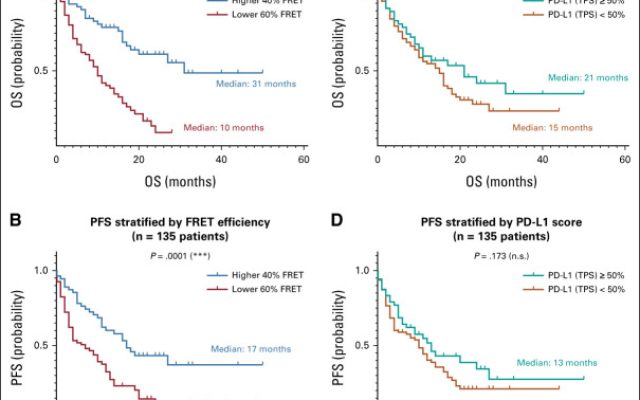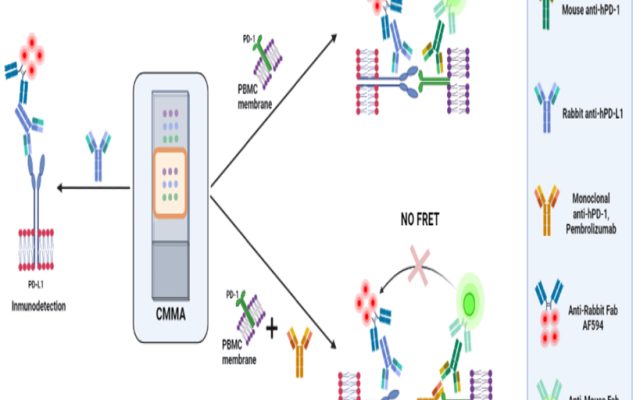Resources
Stay up-to-date with our most recent publications
Reviews

Miles, J., et al. The Fusion of Quantitative Molecular Proteomics and Immune-Oncology: A Step Towards Precision Medicine in Cancer Therapeutics. FEBS Letters. 2022.

Larijani, B., and Miles, J. Quantification of Protein-Protein Interactions and Activation Dynamics: A New Path to Predictive Biomarkers. Biophysics Chemistry. 2022.
Case Studies
QF-Pro® has also been validated in several clinical studies. Please view ‘Our Papers’ to see a selection of research outputs which have featured QF-Pro® technology.
Case Study 1
QF-Pro® could predict patients’ response to immunotherapy in lung cancer. In a study published in Journal of Clinical Oncology in 2023, we showcased the ability of QF-Pro® to predict patient response to anti-PD-1/PD-L1 therapies by directly quantifying the interaction state of this immune checkpoint directly within patient biopsy samples. The results were ground-breaking. QF-Pro® could triple response rates and double overall survival rates compared to the current clinical gold-standard, PD-L1 TPS score.
Case Study 2
Determination of Interactive States of Immune Checkpoint Regulators in Lung Metastases after Radiofrequency Ablation. In a novel study, published in the journal Cancers, QF-Pro® quantified the interaction states of PD-1/PD-L1 and CTLA-4/CD80 in radiofrequency ablations (RFA)-treated lung metastases. This was the first time CTLA-4/CD80 interaction states had been spatially quantified in tissue samples, and showcased a potential route to select patients who would benefit from RFA and ICI dual therapy treatments.
Case Study 3
QF-Pro® was applied, for the first time, to quantify the interaction states of PD-1/PD-L1 (in cells and FFPE tissues) and CTLA-4/CD80 (in cells). In this study, QF-Pro® technology was validated as a proof of concept for these two interactions showing great sensitivity and specificity. Moreover, QF-Pro® could predict patient overall survival in melanoma and lung cancer. Strikingly, in renal cancer, QF-Pro® outperformed the Proximity Ligation Assay (PLA) technology for the detection and quantification of these interactions.
Case Study 4
In this novel experimental set up, we spatially mapped the interaction state of PD-1/PD-L1 between melanoma cells and cell-membrane on tissue microarrays. This showcased the utility of membrane microarrays in combination with the quantification of spatial functional proteomics.
Case Study 5
QF-Pro® quantified the activation (phosphorylation) state of the oncoprotein Akt/PKB in clear cell renal cell carcinoma (ccRCC). This provided a prognostic tool capable of predicting overall survival in patients, with those patients with a higher activation state of Akt/PKB showing significantly poorer survival. Akt/PKB was originally discarded as a prognostic biomarker by the scientific community when only its expression was measured. This study exhibited the power of using functional spatial proteomics to map biomarker functionality within samples.













